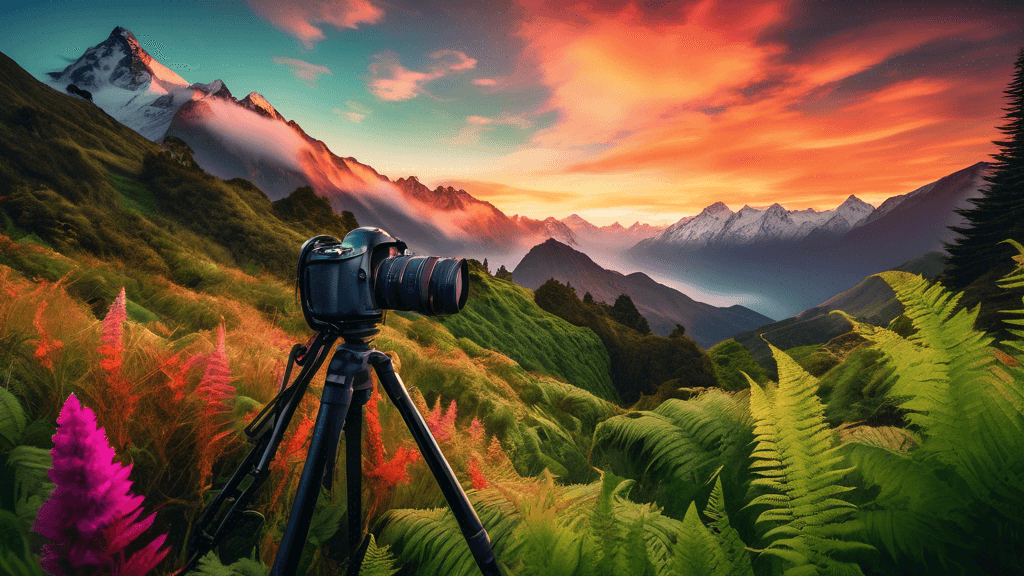
Capturing the Essence: How to Photograph New Zealand's Majestic Landscapes
Share
Understanding the Landscape of New Zealand
New Zealand, a breathtakingly beautiful country in the southwestern Pacific Ocean, is celebrated for its diverse landscapes. From towering mountains and active volcanoes to lush forests and stunning coastlines, every corner offers a postcard-worthy view. Photographing these landscapes, however, requires more than just a camera and enthusiasm. It involves understanding the light, the land, and the fleeting moments that capture the essence of this wild, pristine environment.
Choosing the Right Equipment
Before you even set foot on New Zealand's soil, it's crucial to consider what photography gear to bring along. The dynamic and sometimes unpredictable weather conditions demand robust and reliable equipment:
- Camera: A DSLR or a mirrorless camera with a high dynamic range is preferable to capture the vast contrasts in landscape scenes.
- Lenses: A wide-angle lens is essential for capturing expansive landscapes, while a telephoto lens can be useful for isolating distant features like mountain peaks or waterfalls.
- Filters: Circular polarizing filters can enhance the vibrancy of the sky and manage reflections, whereas neutral density filters allow for long exposures in bright conditions.
- Tri-pod: A sturdy tripod is indispensable for long exposures, particularly in windy conditions which are common in coastal areas.
Mastering the Light
Lighting is a critical factor in landscape photography; it can alter the mood of the image and bring a scene to life. New Zealand's light can be particularly challenging due to its purity and clarity. Landscape photographer Loren Bell, known for her evocative images of the South Island, once said, In New Zealand, the light is a painter's dream. It dances across the landscapes, transforming with every passing hour. To make the most of New Zealand’s light:
- Golden Hours: Shoot during the golden hours—just after sunrise or before sunset—when the light is soft, warm, and angular, giving textures and shapes more definition.
- Weather Changes: Embrace changing weather conditions. Overcast days can reduce glare and distribute light evenly, which is perfect for capturing the deep hues of forests and rivers.
- Direction of Light: Be mindful of the direction of the light. Side lighting can exaggerate features of the landscape, while backlighting and silhouettes can be used to create dramatic effects.
Understanding the Best Locations
Choosing the right location is as critical as the equipment you carry. Some of New Zealand’s most iconic scenery can be found in the following places:
- Fiorland National Park: Home to the famous Milford Sound, renowned for its fjords and waterfalls.
- Mount Cook National Park: Offers stunning views of New Zealand's highest peaks and glacial lakes. Ideal for capturing star trails and the Southern Lights.
- Rotorua: Known for its geothermal activity. The steaming hot springs and mud pools create an ethereal atmosphere suitable for mood photography.
Composition and Creativity
When photographing landscapes, consider the principles of composition such as the rule of thirds, leading lines, and framing. The composition not only guides the viewer's eye through the image but also enhances the overall impact of the photograph. Combining these technical aspects with a touch of creativity can result in truly powerful imagery. Why not try including elements such as a human figure or a native bird to provide a sense of scale and life? Remember, the goal is to evoke the emotion and beauty of the landscape through your lens.
Incorporating Environmental Conservation
As photographers and enthusiasts of the great outdoors, we also carry the responsibility of protecting these landscapes. Practicing 'Leave No Trace' principles is paramount while shooting in natural settings. Conservation photographer Jessica Martin delves into this, stating, Every shot we take, every trail we tread, we must be mindful of the impact we leave - our legacy should be the preservation of these wonders, not just their capture.
Conclusion
Capturing the majestic landscapes of New Zealand is about more than just taking photos; it's about experiencing and preserving nature's marvels. Whether you're a seasoned photographer or an enthusiastic beginner, the key lies in preparation, patience, and respect for the natural world. So, grab your gear, embrace the elements, and create images that not only depict the splendor of New Zealand but also tell a story of conservation and admiration.
Now that you're equipped with the knowledge, why not plan your next journey to this magnificent land and put your skills to test? Remember, each photograph you take is a love letter to the environment. Make it count.





